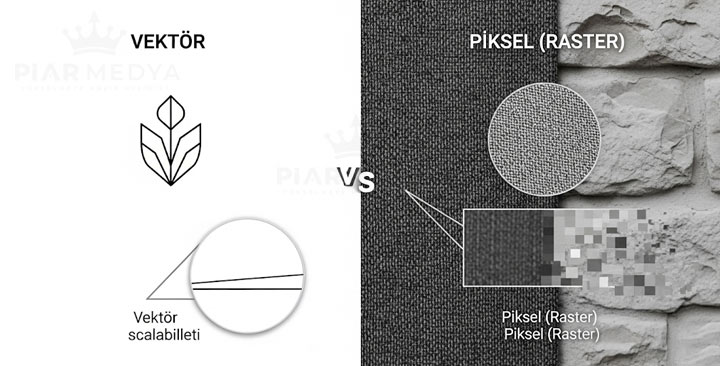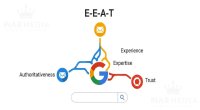What is Graphic Design? The Power and Strategic Importance of Visual Communication
What is graphic design, why is it important, and how is it done? Explore our 2025 guide covering fundamental principles, professional processes, and modern tools. You will find answers to all your questions related to topic What is Graphic Design? The Power and Strategic Importance of Visual Communication in the continuation of the text.

Graphic Design: The Discipline of Turning a Message into Art
Not Just Aesthetic, But A Strategic Necessity: Why Is Graphic Design Important?
The Universal Language of Visual Communication: Fundamental Principles of Graphic Design
Establishing Structure and Order
Creating Emphasis and Flow
From Idea to Work: The Professional Graphic Design Process
The Designer’s Toolbox with the MUVERA 2025 Vision
Where Does Graphic Design Come to Life? Key Application Areas
In Summary
Graphic Design: The Discipline of Turning a Message into Art
Graphic design (Graphic design) is the art of conveying an idea, message, or emotion to a specific target audience using tools like color, form, typography, and visual hierarchy. It is not merely an aesthetic effort but a consciously crafted visual communication strategy. A logo you see, a magazine you read, a website you browse, or a product package you hold in your hands are all evidence of how strategic thinking comes to life through graphic design.
Not Just Aesthetic, But A Strategic Necessity: Why Is Graphic Design Important?
In today’s world—both digital and physical—where we are bombarded with visuals, it’s harder than ever to grab attention and remain memorable. This is where graphic design becomes the voice, identity, and compass of your brand amidst this chaos. Its importance goes much deeper than just looking beautiful.
What Is Its Strategic Value?
Good graphic design shapes the first impression, builds trust, and makes a complex message understandable in seconds. It silently yet powerfully communicates your brand’s value, professionalism, and quality. Bad design, on the other hand, can make even the highest‑quality product or service look amateurish and unreliable.
- Differentiation and Recognition: Helps you stand out from competitors and secure a unique place in the consumer’s mind. A strong visual identity allows you to be recognized instantly.
- Communication and Clarity: Conveys information (infographics, reports, presentations) much faster and more effectively. The human brain processes visuals 60,000 times faster than text.
- Trust and Credibility: Professional and consistent design shows your brand takes its work seriously and builds consumer trust.
- Increased Conversions and Sales: A well‑designed website, user‑friendly app interface, or eye‑catching packaging directly influences user behavior, boosting sales and conversion rates.
The Universal Language of Visual Communication: Fundamental Principles of Graphic Design
Effective design does not happen by chance. It is based on universal principles that guide the viewer’s eye, clarify the message, and create aesthetic satisfaction. These principles are the grammar of design.
Establishing Structure and Order
- Balance: The visual weight of design elements distributed around an axis. Symmetrical balance conveys calmness and formality, while asymmetrical balance creates a sense of dynamism and modernity.
- Alignment: Nothing is placed randomly on the page. Every element is invisibly connected to another, giving the design a tidy and cohesive feel.
- Proximity: Grouping related elements together. This reduces clutter and helps the viewer process information more easily.
- White Space: The empty spaces in the design, which are far from “empty.” They enhance readability, reduce complexity, and create breathing room to emphasize key elements.
Creating Emphasis and Flow
- Contrast: Used to grab attention and establish hierarchy. Contrasts in color (light/dark), size (big/small), or form (thin/thick) highlight the most important message.
- Repetition & Rhythm: Repeating certain design elements (color, typography, shape) to maintain consistency in brand identity. Repetition creates rhythm and unifies the design.
- Emphasis: The focal point where you want the viewer’s eye to go first. Typically created through contrast or sizing.
- Movement: Guiding the viewer’s eye along a particular path throughout the design. Lines, shapes, and colors direct this flow.
From Idea to Work: The Professional Graphic Design Process
A successful design project starts with a creative spark but progresses through strategic steps. This process ensures the project achieves its goals.
- Strategic Discovery and Brief: It all begins with the question “why.” What is the purpose of the project? Who is the target audience? What is the main message to be delivered? In this stage, the client is listened to and a roadmap is drawn.
- Research and Concept Development: Competitive analysis and market research are conducted, and moodboards are created. Various creative ideas and visual concepts are brought to life through sketches.
- Design and Implementation: The chosen concept is detailed using digital tools. Color palettes, typography, and visuals come together to create the first versions of the design.
- Revision and Feedback: The designs are presented to the client, and feedback is gathered. This stage is critical to ensure the design fully aligns with the goals.
- Finalization and Delivery: Once final approval is received, the design is prepared in formats suitable for its intended platform—web, print, or social media—and delivered.
When managed by professional advertising agencies, this meticulous process produces results that serve the brand’s strategic goals.
The Designer’s Toolbox with the MUVERA 2025 Vision
Graphic designers use various software to bring their ideas to life. The MUVERA 2025 vision focuses not just on knowing the tools but on selecting the right tools for the right project and leveraging AI‑powered capabilities.

Raster‑Based: For photo editing and digital painting.
- Adobe Photoshop: The industry standard.
- GIMP: A powerful and free alternative.
- Procreate: Leading digital drawing tool for iPad users.
Vector‑Based: For designs like logos and icons that can be scaled without losing quality.
- Adobe Illustrator: The industry standard for vector drawing.
- Affinity Designer: A powerful, subscription‑free alternative.
- Inkscape: A free and open‑source option.
Layout: For multi‑page publications such as brochures, magazines, and books.
- Adobe InDesign: Professional publishing solution.
UI/UX and Web Interface Design: For website and mobile app interfaces.
- Figma: The most popular cloud‑based collaborative tool.
- Sketch: A strong interface design tool for Mac users.
Quick and Practical Solutions: Template‑based platforms also used by non‑designers.
- Canva: Ideal especially for social media content.
Where Does Graphic Design Come to Life? Key Application Areas
Graphic design appears everywhere and in every industry. Here are some of the most common application areas:
- Brand Identity Design: It builds a brand’s character and personality by creating its logo, colors, fonts, and overall visual language — in other words, its corporate identity.
- Marketing and Advertising: Reaches the target audience through digital and print ad campaigns, social media visuals, posters, brochures, and email newsletters.
- User Interface (UI) Design: Combines usability and aesthetics by designing the visual interfaces of websites and mobile apps.
- Packaging Design: The product’s “silent salesperson” on the shelf. Grabs consumer attention and conveys product information.
- Publication Design: Creates layouts for books, magazines, catalogs, and annual reports—both in print and digital formats.
- Motion Graphics: Uses animated text and visuals in videos, presentations, and ads to create dynamic communication.
- Illustration and Art: Creates unique drawings and artistic compositions, giving brands and publications a distinctive character.
In Summary
In summary, graphic design is a powerful communication discipline that combines strategic thinking with aesthetic intuition and plays a critical role in the success of a brand or idea. It ensures your brand’s message reaches the right audience in the right way, distinguishes you from competitors, and helps build meaningful connections with your audience.
Having a professional vision in this complex and creative process ensures you get the most out of your investment. Working with a graphic design agency is the most effective way to fully unlock your brand’s visual potential.






